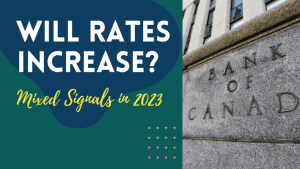A new report from Morningstar DBRS shows that more Canadian homeowners are starting to fall behind on their mortgage payments—many of whom are self-employed, new to Canada, or rebuilding credit.
Even though the Bank of Canada has begun lowering interest rates, many homeowners are still renewing at rates much higher than they had before. Add rising living costs and job uncertainty, and it’s easy to see why mortgage stress is growing.
The good news? Mortgage delinquency is preventable. Canada’s banking system is designed to help you before things get out of hand. If you act early, you can protect both your home and your financial future.
What Is Mortgage Delinquency?
A mortgage becomes “delinquent” when you miss payments for 90 days or more. But you don’t have to wait that long to act—even one missed payment is a warning sign that it’s time to reach out for help.
Delinquency can also happen if you don’t pay your property taxes, let your home insurance lapse, or make major property changes without telling your lender. The key is to communicate these things early.
How Banks Decide What You Can Afford
Before you get a mortgage, lenders take a close look at your finances to decide how much you can safely borrow. This is part of how they protect both you and themselves from future mortgage stress. Lenders will review your income, debts, down payment, credit history, and expenses, using ratios and a stress test to ensure you can handle current and potential future payments.
HOWEVER! Many homeowners become “house poor” despite their lender’s calculations. If you aren’t a homeowner yet, before you sign on the dotted line, I highly recommend practicing living like a homeowner to find out if you really can afford it. Find out how much a mortgage is going to cost you, then set your monthly budget with that in mind and see what happens over 3-6 months. Did the cost of homeownership feel manageable? Did you start to feel the pinch? Or was it completely overwhelming? This will give you a good idea what living with a mortgage will look and feel like.
How to Avoid Mortgage Trouble: 5 Steps That Work
If you’re already a homeowner and your finances aren’t looking good, here are the things I want you to do.
1. Talk to Your Lender Early
If you think you might miss a payment—or even if your renewal is coming up and you’re worried about higher costs—call your lender right away. Banks in Canada are required by the Financial Consumer Agency of Canada (FCAC) to offer government-backed, tailored support for homeowners facing financial stress. They can offer:
-
Temporary payment deferrals
-
Extended amortization (more years to pay off your loan, which lowers your monthly cost)
-
Interest-only payment periods
-
Fee or penalty waivers in some hardship cases
These are not favours—they’re formal relief options designed to help you stay in your home. Your bank must explain these options clearly—how they affect your loan amount, total costs, and interest. You’ll need to give consent before any changes are made.
2. Create a Crisis Budget
When money is tight, first focus on keeping your home. Prioritize mortgage payments, property taxes, insurance, utilities, and basic living costs. Cut back on non-essentials, cancel subscriptions, and look for ways to bring in extra income, even temporarily. If you act early, small adjustments now can prevent big problems later.
3. Explore Refinancing Options
Sometimes the best way forward is to restructure your mortgage. Refinancing can lower your payments, switch you from a variable rate to a fixed one, and consolidate other high-interest debts. A licensed mortgage broker like me can help you explore these options across multiple lenders—not just your bank.
Avoid private lenders if possible; recent data shows that most forced home sales in recent years involved high-risk private loans.
4. Consider Selling Before Default
If your situation is severe or long-term, selling your home voluntarily may be the smartest move. This can protect your credit score, save thousands in penalties, and allow you to start fresh. Banks are often willing to waive certain fees or penalties when you sell to avoid foreclosure. You stay in control, rather than letting the process take control of you.
What Not to Do
-
Don’t ignore the problem. Missing letters or avoiding calls only makes it worse.
-
Don’t use payday loans or credit cards to cover mortgage payments.
-
Don’t break your mortgage terms by skipping property tax or insurance.
Lenders want to work with you. Their goal is to keep you in your home—not to take it away.
Looking Ahead: Staying Financially Resilient
Even though mortgage delinquencies are rising slightly, Canada still has one of the lowest default rates in the world. That’s encouraging—but it’s no reason to get careless.
Interest rates may come down further, but the cost of living and household debt remain high. The best protection is to stay informed and plan ahead:
-
Keep a 3-6 months of expenses in savings if you can
-
Review your mortgage terms before renewal
-
Stay in touch with your mortgage broker for updates and guidance
If you’re feeling financial strain, you’re not alone—and you’re not out of options. Whether you’re a first-time buyer, new to Canada, or simply adjusting to higher payments, the most important thing you can do is take action early. Talk to your lender, reach out to a licensed mortgage broker (that’s me), and explore all available programs before missing any payments.
If you’re in this boat or think you might be headed that way, contact me and we can put together a proactive plan that will give you peace of mind.





